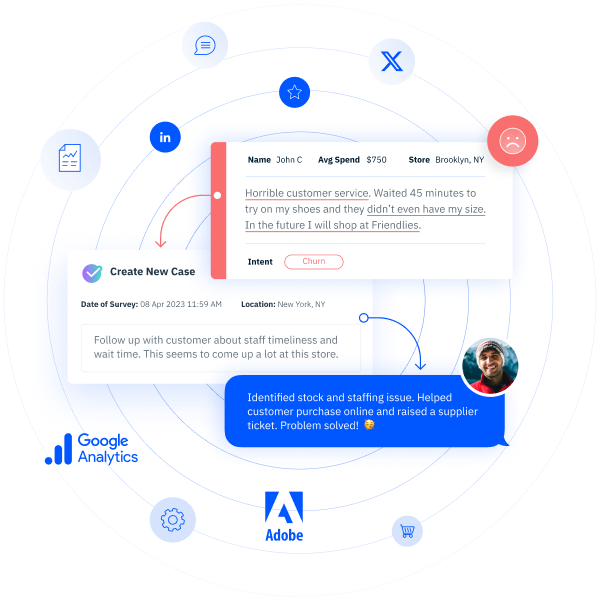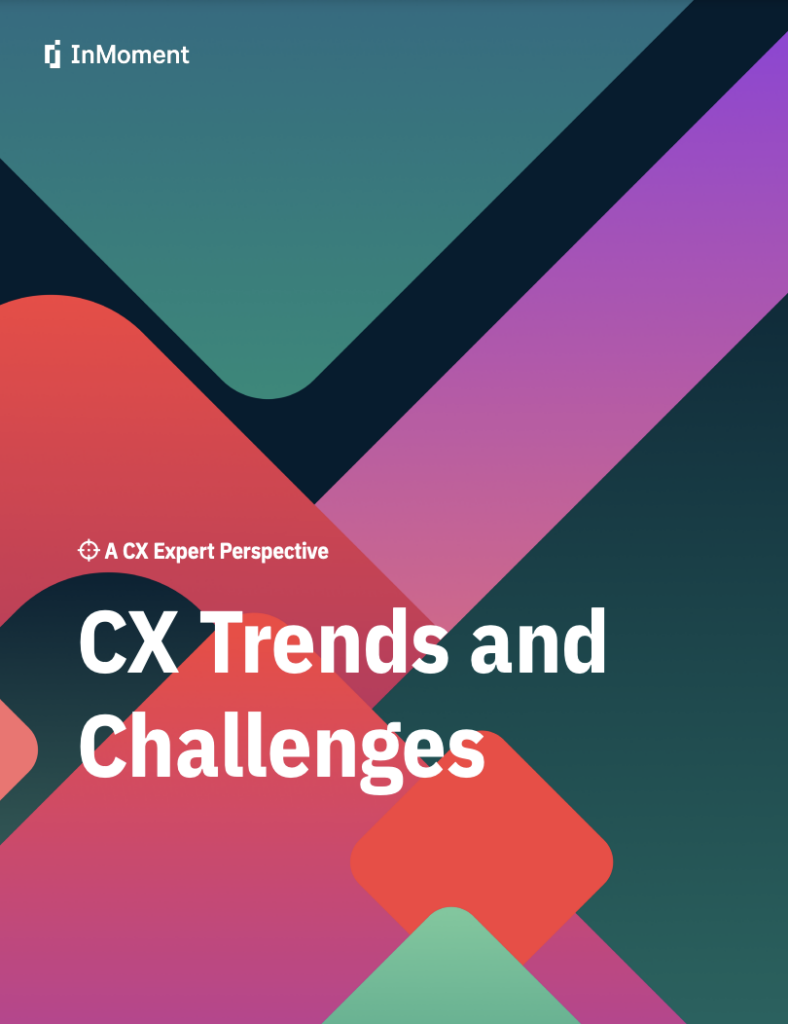Customer Experience Strategy Guide: Tips to Drive Business Success
A customer experience strategy includes various business initiatives aimed at creating a customer experience that distinguishes your business from its competitors, thereby fostering long-term customer acquisition and loyalty.
A well-designed customer experience strategy can be the main aspect that helps you attract and retain your customer base, so you don’t want to leave anything up to change. Instead, your brand needs to have incredibly intentional customer experience management techniques in place. In this article, we’ll cover the customer experience, what your customer experience strategy needs, how to overcome challenges, and how to get started.
What Is a Customer Experience Strategy?
A customer experience strategy stands as a pivotal guide for organizations seeking to create meaningful and lasting connections with their customers. Unlike traditional approaches that focus solely on transactions, a customer experience strategy is a holistic plan designed to enhance every touchpoint a customer has with a brand.
Defining Customer Experience
Customer experience (CX) itself encompasses the entirety of a customer’s journey with a brand, from the initial interaction to post-purchase support. It goes beyond the product or service itself, delving into the emotional and psychological impact of every interaction. CX is the sum of all perceptions, feelings, and responses a customer develops throughout their engagement with a company.
Distinguishing Customer Experience From Customer Service
While customer service is a crucial component of the overall customer experience, it represents just one facet of the entire journey. Customer service typically involves addressing specific issues or inquiries, often reactive in nature. It’s the assistance provided when a customer has a question, concern, or problem.
On the other hand, a customer experience strategy takes a proactive and comprehensive approach. It involves pre-emptive measures to understand and cater to customer needs and desires at every stage of their journey. It encompasses not only resolving issues but also creating positive, memorable moments that foster loyalty and advocacy.
What Are the Components of a CX Strategy?
By incorporating these key elements into your customer experience strategy, you can create memorable, personalized, and enjoyable experiences that foster customer loyalty and advocacy.
Customer Segmentation and Persona Development
Customer segmentation involves dividing your customer base into distinct groups based on characteristics such as demographics, behavior, preferences, and needs. Persona development takes it a step further by creating fictional representations of your target customers, including their goals, motivations, and pain points. These techniques help businesses tailor their experiences to specific customer segments, delivering personalized and relevant interactions.
Designing a Seamless Omnichannel Experience
In today’s digital age, customers expect a seamless experience across multiple channels, whether it’s a website, mobile app, social media, or physical store. Designing an omnichannel experience ensures consistency and continuity throughout the customer journey, with both online and offline channels. It involves aligning messaging, branding, and interactions across all touchpoints, allowing customers to switch between channels seamlessly.
Mapping the Customer Journey
Customer journey mapping involves visualizing and understanding the various stages, touchpoints, and emotions a customer goes through when interacting with your business. It helps identify pain points, areas of opportunity, and critical moments where businesses can make a significant impact on the customer experience. Mapping the customer journey enables companies to proactively address customer needs and provide solutions at every step, meaning that you are being intentional with all of your resources and data.
Implementing Effective Communication Channels
When people connect with your brand, how do they contact you? How are their questions answered? What does their interaction look like? Effective communication channels are crucial for delivering a positive customer experience. Businesses should offer multiple channels such as phone, email, live chat, social media, and self-service options—this helps reach all members of your audience, no matter their preferred communication channel.
These channels must be easily accessible, responsive, and integrated to provide seamless communication and support to customers. When they do connect through one of your channels, customers should receive prompt and personalized responses whenever possible.
Empowering Employees for Superior Service
The first impressions your brand makes usually start with employees and how they deliver customer service, so it’s important to hire and train employees that can offer customer-centric interactions. Empower your employees by providing them with the necessary training, resources, and authority to address customer needs effectively. You can also encourage and empower employees to foster a sense of ownership and accountability to resolve any customer issues. The employee experience is an important part of your customer experience strategy that cannot be overlooked!
Leveraging Technology for Enhanced Experiences
Just like every other part of your business, technology can significantly enhance the customer experience, too. Utilize customer relationship management (CRM) systems to store and analyze customer data, enabling personalized interactions. Leveraging automation tools for streamlined processes and self-service options is also a great way to reach multiple audiences and make their experience more helpful. Explore emerging technologies like chatbots, artificial intelligence (AI), and data analytics to gain insights and improve the customer experience.
Building a Culture of Continuous Improvement
Perfecting your customer experience strategy is an ongoing process, and it’s essential to foster a culture of continuous improvement so you can grow with your clients and customers. Regularly collect and analyze customer feedback, measure key performance indicators (KPIs), and monitor customer satisfaction and loyalty metrics. Use these insights to identify areas for improvement, make data-driven decisions, and continually evolve your customer experience strategy.
How to Create A Customer Experience Strategy
Creating an effective Customer Experience (CX) Strategy involves a meticulous process of understanding, analyzing, and identifying areas for improvement. Here’s a step-by-step guide to kickstart the creation of your CX strategy:
1. Customer Research and Data Gathering:
- Start by gathering comprehensive data on your customers. This includes demographics, preferences, feedback, and pain points.
- Utilize surveys, interviews, and analytics tools to gain insights into customer behaviors and expectations.
2. Journey Mapping:
- Map out the entire customer journey, from the initial touchpoint to post-purchase interactions.
- Identify critical touchpoints and moments that significantly impact the customer experience.
3. Identifying Pain Points:
- Analyze customer feedback and data to pinpoint areas where the customer experience is currently subpar.
- Prioritize these pain points based on their impact on customer satisfaction.
4. Setting Clear Objectives:
- Establish specific, measurable, achievable, relevant, and time-bound (SMART) objectives for your CX strategy.
- Define what success looks like and align your goals with the overall business strategy.
5. Employee Involvement:
- Engage employees at all levels in the process. Gather insights from front-line staff who directly interact with customers.
- Foster a culture that prioritizes and values the customer experience.
How to Build A Customer Experience Strategy
With a foundation in place from the creation phase, building your Customer Experience (CX) Strategy involves refining goals and establishing the framework to achieve them. Here’s how you can progress to the next level:
1. Goal Finalization:
- Refine and finalize the goals identified in the creation phase. Ensure they align with the overall business objectives and customer expectations.
2. Strategy Development:
- Devise a comprehensive strategy that addresses the identified pain points and enhances positive touchpoints.
- Consider technological solutions, process improvements, and employee training to support the strategy.
3. Customer-Centric Processes:
- Align internal processes with the customer journey. Ensure that every department contributes to a seamless and positive experience.
- Implement changes that prioritize customer needs and convenience.
4. Communication and Feedback Loops:
- Establish clear communication channels for customer feedback.
- Implement regular feedback loops to measure the effectiveness of the strategy and make adjustments as needed.
5. Training and Empowerment:
- Provide ongoing training for employees to enhance their customer service skills.
- Empower employees to make decisions that prioritize the customer experience.
By systematically creating and building upon your CX strategy, you not only address current pain points but also establish a framework for continuous improvement, ensuring that your customer experience remains exceptional over time.
Common Customer Experience Strategies by Industry
Tailored customer experience strategies are crucial to meeting the unique needs of various industries. Here’s a glimpse into common customer experience strategies across different sectors:
Automotive: In the automotive industry, enhancing the customer experience often involves improving both the driving and purchasing processes. Implementing cutting-edge technology for an intuitive and enjoyable driving experience, as well as streamlining the purchase process at dealerships, can significantly elevate customer satisfaction.
B2B: For B2B (Business-to-Business) enterprises, personalized and streamlined interactions are paramount. Customizing communication channels, providing dedicated account management, and offering solutions that cater to the specific needs of each business client contribute to a positive B2B customer experience.
E-commerce: In the realm of e-commerce, a seamless online checkout experience is a game-changer. Streamlining the purchase process, minimizing friction points, and ensuring secure transactions contribute to building trust and loyalty among online shoppers.
Financial Services: When it comes to financial services, transparency, and personalized services are key. Implementing user-friendly online banking interfaces, offering personalized financial advice, and ensuring clear communication about fees and policies contribute to a positive customer experience in finance.
Food Services and Restaurants: An equal focus on both in-person and digital experiences is incredibly important to success in the food service industry. Here, a CX strategy may include optimizing the ordering process, enhancing the dine-in ambiance, and providing personalized recommendations based on customer preferences.
Insurance: In the insurance industry, simplifying complex processes and improving communication can greatly enhance the customer experience. Providing clear policy information, offering digital claims processing, and incorporating proactive communication on policy updates contribute to customer satisfaction.
Healthcare: In healthcare, the emphasis is on patient-centric care. Implementing digital appointment scheduling, improving communication between healthcare providers and patients, and utilizing telemedicine options contribute to a more positive and convenient healthcare customer experience.
Retail: For retail, creating an omnichannel shopping experience is crucial. Integrating online and in-store experiences, providing personalized recommendations, and optimizing inventory management contribute to a seamless and enjoyable retail customer experience.
Travel & Hospitality: In the travel and hospitality industry, personalization and convenience are of the utmost importance. Implementing mobile check-ins, offering personalized travel recommendations, and providing excellent customer service during every stage of the journey contribute to a memorable travel and hospitality experience.
Challenges and Solutions in Implementing CX Strategies
Overcoming Internal Resistance and Silos
Even when you know what your strategy should be, it isn’t always easy to get the green light from your internal teams. Gaining buy-in from stakeholders and breaking down departmental barriers can be one barrier to overcome, but you can work to eliminate those silos by creating a shared vision and aligning with the organization’s overall goals.
Encourage open communication and collaboration among departments, fostering a culture of teamwork and understanding. Also, make the benefits of CX initiatives crystal clear with data-driven decision-making, which can also help you overcome resistance and gain support across the organization.
Ensuring Data Privacy and Security
Gathering and utilizing customer data for CX initiatives raises concerns about data privacy and security. Customers expect their personal information to be handled responsibly, and any data breaches or misuse can damage trust and harm your customer experience strategy.
You should comply with data protection laws and regulations by safeguarding customer information. You need to be a trustworthy brand if you want to earn loyalty from your customers, so start with security.
Comply with relevant data protection regulations, such as GDPR or CCPA, and ensure proper consent is obtained for data collection and usage. Invest in secure data storage and transmission protocols, conduct regular security audits, and provide transparency to customers regarding data handling practices. You should also establish a strong data governance framework and train employees on data privacy best practices.
Balancing Automation and Human Touch
We just discussed how helpful and innovative automation is, but you do need to strike a balance between efficiency and personalization. Leveraging automation without compromising customer experience is all about preserving that human touch in your brand, advertising, customer service, etc. You can utilize automation to handle repetitive and transactional tasks and leave more complex customer interactions to employees.
For example, you can implement self-service options and chatbots to provide immediate assistance for routine queries. However, ensure that there are opportunities for customers to engage with human support when needed. Create a seamless handoff between automation and human support, ensuring a smooth transition without frustrating the customer.
Measuring the Success of Customer Experience Strategies
When you have a strong handle on how to reach your target audience, you also need to measure customer satisfaction and loyalty via customer experience analytics to determine how effective your marketing efforts are. The best way to measure and improve upon the customer experience strategy is to go right to the source and gather feedback from customer satisfaction surveys, online reviews, social media, and NPS scores.
You should also set key performance indicators (KPIs) for CX so that you can gather useful data and use that data to drive your marketing decisions. Tracking customer satisfaction and loyalty metrics usually involves KPIs like this:
- Customer Satisfaction Score (CSAT): CSAT measures overall satisfaction through surveys or feedback, providing a snapshot and improvement areas.
- Net Promoter Score (NPS): NPS gauges the likelihood of customer recommendations, categorized as Promoters, Passives, or Detractors, indicating loyalty and advocacy.
- Customer Effort Score (CES): CES measures the ease of accomplishing goals, minimizing customer effort, with lower scores indicating efficiency.
- Customer Retention Rate: Measures the percentage of customers continuing business, reflecting CX strategy effectiveness in retaining satisfied and loyal customers.
- Repeat Purchase Rate: Measures the percentage of customers making repeat purchases, showing CX impact on loyalty and positive experiences.
- Customer Lifetime Value (CLV): Quantifies a customer’s total value over their lifetime, considering factors like frequency, order value, and longevity, indicating positive experiences and long-term value.
- Customer Churn Rate: Measures the percentage of customers discontinuing business, helping identify dissatisfaction or CX issues, with lower rates indicating satisfaction and loyalty.
- Online Reviews and Ratings: Monitoring feedback on review platforms provides insights into customer sentiment, with positive reviews and ratings indicating satisfaction and improvement opportunities.
Level Up Your Digital CX Strategy
A customer experience strategy is a vital part of your marketing as it enables businesses to proactively shape and optimize every customer interaction. Doing so ensures consistent and exceptional experiences for those customers, which is great for your customer base!
By understanding customer needs, preferences, and pain points and aligning internal processes and resources accordingly, organizations can cultivate loyalty, increase customer satisfaction, and drive revenue growth. The future of CX strategies includes embracing artificial intelligence, prioritizing personalized experiences, having a seamless omnichannel integration, leveraging data analytics, and creating effective feedback loops. This is the only way to evolve with the times and deliver great services and experiences for your customers.
A well-crafted customer experience strategy ultimately fosters customer retention, positive word-of-mouth, and differentiation in a competitive market, leading to sustainable business success. To create such a strategy right now, you need resources like surveys and other feedback tools to learn more about what your customers really need. InMoment can help you craft feedback tools and perfect your marketing with our extensive CX management platform. Find the right CX solution that supercharges your customer experience strategy today!






